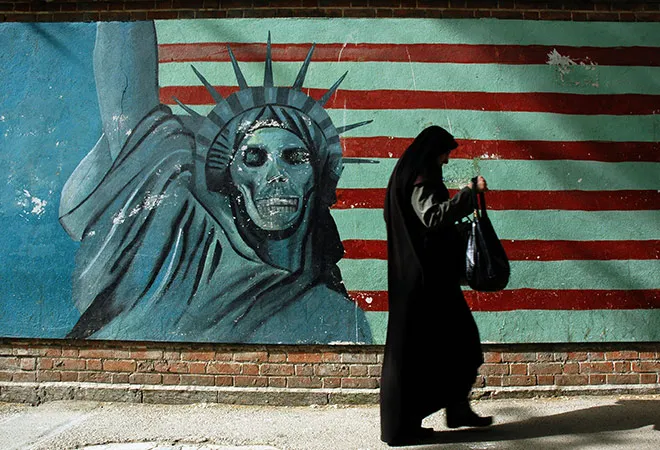Wednesday’s shootings in Teheran are being linked to the United States’ solid backing of Iran’s regional adversaries. They come in a certain historical context. From the end of World War II to the Iranian Revolution of 1979, the US became the anchor power in West Asia. It came to balance the predominant Shia and Sunni nations of the region, with both the Shah of Iran and the King of Saudi Arabia as allies.
The overthrow of the Shah changed all that. It made Iran the visceral enemy in America’s eyes. The populist revolt in Iran was led by a radical clergy and this in turn triggered Islamist energies across West and South Asia. In a sense the world is still paying for that seminal moment in 1979.
Since the revolution, Washington has found it difficult to talk to much less collaborate with Tehran. Tehran hasn’t helped. It has pursued a nuclear weapons programme illegally, even while being a member of the Non-Proliferation Treaty. It has exported its radical ideas to militants targeting Israel — the Hamas — and to Yemen and Syria. Even platforms such as the Non-Aligned Movement — Iran hosted the summit in 2012 — have been exploited to abuse the US.
A breakthrough was made when US President Barack Obama offered Iran an agreement predicated on Iran capping its nuclear weapons programme or, realistically, significantly delaying it. More important, it gave the US and Iran the opportunity to have a semi-normal relationship.
While Obama’s West Asia policy was all over the place, the tentative handshake with Iran was an achievement. It left his successor with the chance to strengthen ties with the Saudis and the Sunni Arab powers as well have a line open to the Iranians. While unlikely to be as ambitious as American dominance in the pre-1979 period, this expanded US options in the arc of terror extending from Afghanistan to Syria and in the war against the Islamic State (IS).
Obama’s successor Donald Trump had different ideas. His close advisers instead sought an entente cordiale with Russia. Trump’s early calculation was he could reject Iran and make up for the absent space by aligning with Russia, bringing Moscow’s firepower to the conflict against IS.
This plan proved a non-starter. Trump’s Russia outreach is dead in the water. On the other hand, as the US president’s recent speech in Riyadh showed, he has placed himself squarely in the Sunni corner. While claiming the US was divorced from the sectarian struggles of the region, he repeatedly attacked Iran and did what he could to please his friends in Riyadh. They responded with a large military purchase.
In the normal course, a good equation between the US and Saudi Arabia would have gladdened Pakistan. However, Trump’s position on Islamabad’s role in the Afghan crisis is not obvious. His national security adviser has said all the right things but the big political statement on Afghanistan is awaited. This is crucial for Iran, which is now going to be an even more determined spoiler in Afghanistan.
Iran began in the 1980s by backing Afghan Shias. Mercenaries descended from that engagement have been deployed in Syria and among Hamas. In the 1990s, Iran began supporting Farsi speakers in Afghanistan, not limited to Shias, as the civil war between Farsi and Pashto speakers intensified. Post-9/11, Iran gradually aided Sunni Pashtun commanders of the Taliban in the name of Islam and against US “occupation”.
Simultaneously, Iran-Pakistan tensions have risen along the border the two countries share. This is partially a result of Sunni supremacists in Pakistan targeting Shias and partially a consequence of Iranian Balochi rebels being sheltered in Pakistan, including, Iran suspects, by American agents.
What will this lead to? In an unlikely extreme, the Pakistan-Iran frontier in the Balochistan region could became a Sunni-Shia fault-line. More immediately, Afghanistan could become a busier theatre for Iranian intervention. Iran could target Pakistani assets, in case the Trump-Saudi-Rawalpindi alliance is renewed — or it could compete with Pakistan for assets, in case Trump cuts off Islamabad.
This is not India’s war. Yet, New Delhi can make tactical gains if it retains diplomatic flexibility.
This commentary originally appeared in Hindustan Times.
The views expressed above belong to the author(s). ORF research and analyses now available on Telegram! Click here to access our curated content — blogs, longforms and interviews.




 PREV
PREV


